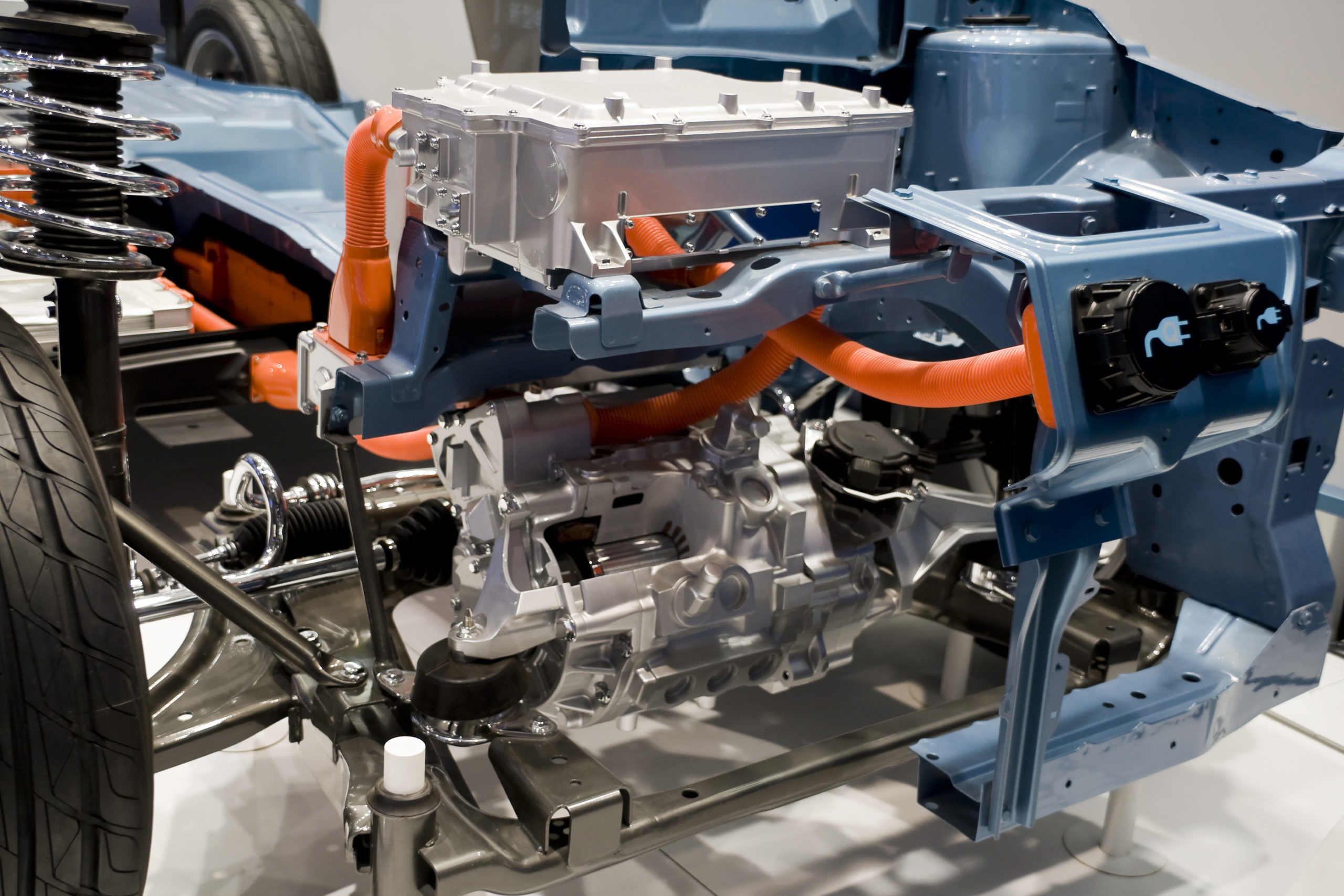Repairing Electric Cars: Things to Consider
December 17th, 2019 by Fix Auto USA

Electric cars have been on the road for more than a decade now, which is more than enough time to need auto body and other types of repairs. If you own or operate an auto body repair shop, you’ve probably already had some experience with electrical car repair. However, in most cases those are probably with older hybrid models that are different from today’s newer purely electric models such as the Nissan Leaf, Chevy Volt and Tesla Roadster.
On the other hand, many auto body shops continue to turn down work involving electric car service. What’s holding them back? Mostly fear of the unknown. They either have little to no experience working on hybrids or the newer electrics, or they mistakenly believe it’s unsafe to work on them.
The market for electric cars is rapidly increasing, and sooner or later they will replace traditional combustion engine vehicles. If you plan to continue operating a successful auto body repair shop, it’s time to start learning about what you need to do to provide electric car service. It’s also a great opportunity to get a jump on your competition. The sooner your business starts earning a reputation as the place to go for quality electrical car repairs, the more of an advantage you will have over competitors in your area.
In addition to electric cars, auto makers are continuing to develop new hybrid models that will need shops that know how to repair them. As with any type of repairs that require the use of powered tools and equipment, there are certain risks involved in the work. But as long as you have the proper knowledge, training, tools and equipment, fear of the unknown shouldn’t hold you back. Here are some key points you should know as you begin to venture into the world of electrical car repairs.
Electrical Car Repair Considerations: Training
There’s a common saying that “knowledge is power.” This is true when it comes to getting comfortable providing electric car service. In fact, many industry experts consider knowledge to be the most important factor when it comes to getting comfortable repairing electric vehicles. Acquiring the knowledge starts with proper training, and not just for the repair technicians. It should also include estimators and insurance representatives who write damage reports and recommend shops to their customers.
Repair techs need two basic kinds of training to work on electrical cars and hybrids:
• Safety training. This includes understanding how hybrid and electric car components work, and hands-on training on how to safely remove high-voltage parts from the vehicle.
• Vehicle training. Repair techs need to know the purpose and location of all the electrical components in the vehicle. These include the inverter, high-voltage battery, service-disconnect system, and electric air conditioning system. They also need to know about the wiring systems.
Where to Get Electric Car Service Information and Training
Information regarding hybrid and electric vehicles is widely available. Some of the best sources include:
• Electric car workshops. I-CAR, a leader in the auto body repair training industry, offers two courses that cover hybrid and electric vehicles. One focuses on hybrid vehicles, the other on alternative fuels.
• Vehicle manufacturers. OEM websites provide in-depth information that teaches emergency first responders about where electric cables are located and how to disable electrical systems during emergencies. This information is highly applicable to collision repair techs. Links to manufacturer guides can be found at oemonestop.com.
• Information providers. Shop owners and repair techs can access information specific to different makes and models of electric vehicles through subscription-based software systems. Examples include Mitchell OnDemand5 and ALLDATA Collision S3500.
• OEM certified repair programs. Auto manufacturers often require repair techs to become OEM-certified before they can replace wiring harnesses or other parts of the high-energy system in their electric cars. Sending your technician to OEM certification training provides a great opportunity to learn what they need to know through hands-on experience.
• Part companies. The big companies that sell automotive parts all offer basic safety classes.
• Books. The Internet holds a treasure trove of books, training manuals and DVDs related to alternative fuel vehicles. Visit fixhybrid.com for more information.
Electric Car Workshop Tips: Safety Precautions
As any electrician knows, working with live power sources requires the utmost in safety precautions. Some essential safety tools and equipment for providing electric car services include:
• Special gloves. Specifically, Class 0 high-voltage lineman’s gloves rated to 1,000 volts. These gloves enable workers to disable batteries and handle high-voltage parts while avoiding potentially fatal electric shocks.
• Protective body suit. The electrolyte used in some electric car batteries is highly toxic. Always wear protective clothing when working on or near a vehicle that is leaking electrolyte chemicals.
• Goggles. Although it hasn’t happened yet, a defective volt-ohm meter could explode when checking voltage throughout a damaged hybrid or electric vehicle. Goggles should always be worn when testing voltage levels.
• Fiberglass pole. These insulated poles can be used to pull technicians away from an electric vehicle if they get electrocuted. These aren’t mandatory to have on-site. But when dealing with electricity, you can’t be too careful.
One other piece of advice – never wear jewelry when working on an electric car, as it increases the possibility of electrocution.
Electric Car Repair Considerations: Tools and Equipment
Electric vehicles aren’t structurally very different from other late-model vehicles. However, they still require different tools in order to safely handle the electrical components.
• Insulated hand tools. Tools get dropped on the job all the time. Accidentally dropping an insulated tool won’t short out any electrical components or cause any sparks to fly.
• Highly rated volt-ohm meter. Electric vehicles carry a lot of juice. Checking the voltage level requires (at minimum) a category III volt-ohm meter rated to 1,000 volts.
• Battery charging equipment. Fortunately, charging equipment for electric cars has come down in price while going up in capabilities. These days, charging stations can power up most types of electric car.
• Wheel dollies. Electric vehicles use the drag on brakes to create electricity. When pushing an electric vehicle through the shop, the drive wheels can charge the vehicle’s inverters. This can lead to problems when parts of the electrical system are disconnected. Instead, use a wheel dolly on the drive wheels to move the vehicle around the shop.
• Non-metal workbench. Never put high voltage parts on anything metal, including a workbench. Wooden benches are okay, but they can conduct electricity if oil gets into the surface. Covering workbenches with plastic or thick rubber floor mats offers a good solution.

Electric Car Service Processes to Keep in Mind
Repair techs should familiarize themselves with the recommended repair processes and methods before starting work on any electrical vehicle. Basic procedures include:
• Disable the electrical system. This will isolate the current to the high-voltage battery.
• Use the proper oil. All electric vehicles have high-voltage air conditioning compressors. Using the wrong type of oil will contaminate the system and cause it to shut down.
• Don’t bake the batteries. Never put electric car batteries in temperatures above 150 degrees Fahrenheit. This requires removing the battery when baking to cure a paint job.
• Test the voltage before working on an electric vehicle. Turn off the vehicle and wait five to 10 minutes. Then test some of the components with your volt-ohm meter to ensure the voltage level is at zero before you start working.
• Torque your connections. High-voltage connections must be torqued to the exact specification. Otherwise, a loose cable could create a fire that burns up the car.
• Know the location of all cables. Never cut through anything without knowing where all the cables are. High-voltage cables are orange. Blue cables are intermediate, conducting between 36 and 42 volts. Always replace damaged orange cables with a new part.
Electric Car Service Means Always Learning
When it comes to hybrid and electrical car repair, the biggest investment for most auto body shops is acquiring the education, training and information. The technology in electric vehicles continues to change at a rapid pace, so it’s critical to keep up with it. Also, keep in mind that a procedure that works well for one type of hybrids or electric vehicles will not necessarily work for others – another reason for ongoing education.
Electrical car repairs represent the future of the auto body repair industry. Invest in the education and training, get the proper tools and equipment, and keep learning. That way you and your employees can work comfortably and safely on these very different vehicles.
Welcome to
Fix Auto USA
We are the premier independent body shop network delivering world-class customer service and high-quality collision repairs across the U.S.
Learn About Us





